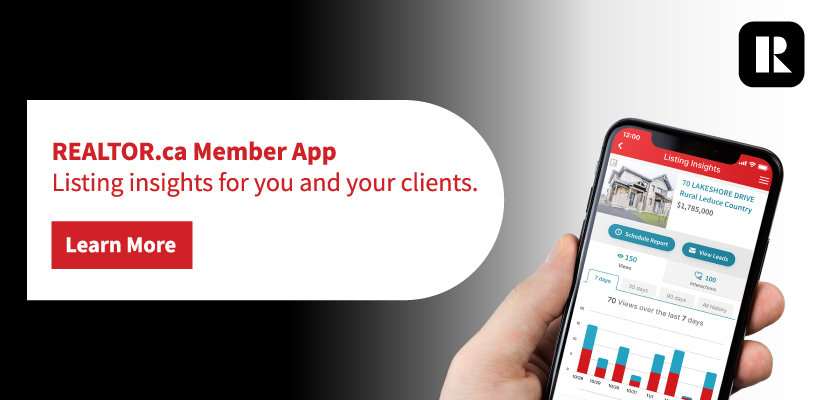Some people will only buy a house if they get to walk through it several times. But there are other purchasers who will buy a house sight unseen. It’s not unusual, and it’s not new.
Broker Jerry Hammond of Hammond International Properties in North York, Ont., says his experience with people who buy sight unseen started in the early 1990s with foreign buyers.
In some cases, not only are the houses unseen, so are the clients. A large percentage of Asian buyers buy this way, he says.
“Some buyers want to be discreet. They will have a family member or a representative visit the home and will buy it without seeing it for themselves.”
The purchase may be made by power of attorney, or someone else may buy on behalf of the buyer, sign the agreement and transfer the title later to an Ontario company, another person’s name or a holding company, says Hammond, who does about 10 sight unseen deals a year. However, they’re only sight unseen from the standpoint of a personal visit. Hammond says his clients receive quality visuals, including floor plans, movies, descriptions, professional photographs, booklets of features and information about amenities, from shopping to schools.
“Pictures speak a thousand words,” says real estate agent Sam McDadi of Sam McDadi Real Estate in Mississauga, Ont., who uses lifestyle videos.
Whether the property is $400,000 or $4 million, real estate agent Eileen Lasswell of Chestnut Park Real Estate in Toronto has quality materials ready to send out at a moment’s notice.
The agents also agree that it’s important to have a local trusted family member or representative view the property in person. It’s not unusual for these people to use video conferencing while they tour the property. That way the representative can translate, and if the potential buyer has questions, they can be answered on the spot, Hammond says.
Having a trusted friend or family member look at the house also helps because even though the potential buyer may like the way a house looks, they may not be familiar with the area and street. “It gave my client some comfort that a local friend he relied on and trusted looked at the property first,” McDadi says.
But it’s not just foreign buyers who buy without seeing a home in person, says Lasswell, adding that people who buy sight unseen make up about 10 per cent of her business.
Buyers may be away on vacation, one of the principal decision makers may be away on business or parents may decide to buy a condo instead of paying rent for the four to six years their child would attend school. “They’re not going to fly in to see a condo,” Lasswell says. “There are many reasons people buy sight unseen.”
That’s why it’s always paramount to have quality marketing materials at the ready.
Buying sight unseen happens in all price points. “On smaller investment properties of $500,000 to $700,000, it’s not as unusual for people to buy sight unseen as long as numbers align,” McDadi says. “Whether they’re local or buyers from abroad, they look for a certain return. When we give them the thumbs up on capital appreciation, whether houses or condos for investment purposes, they are more willing to buy sight unseen.”
But buyers also purchase multi-million-dollar properties. Whatever the price point, having a trusted agent is key. Buyers want to know how you do business, McDadi says. “Do you run a good ship? Do you have a good reputation?”
Being prepared goes without saying. Lasswell says she knew her client, who regularly travels around the world on business, likely wouldn’t be in town when something suitable came on the market. “I hired a driver, so I could spend quality time with the client. We saw 10 or 15 properties in one day. I summarized everything, pros and cons, in a Google document.”
She ranked each property out of 10 and asked the clients to do the same. “That reveals what the client really wants,” she says. “It took effort on his part too. It’s a two-way street. He made an offer on a property he’s never seen only because we did the homework.”
For those faced with a sight unseen situation for the first time, here are some points to keep in mind:
- You still have to ask the same questions. Ask the person communicating on behalf of the buyer about the budget, whether financing will be required or if they will need further connections, such as lawyers or financing options. With interest rates so low, most buyers take advantage of financing, Hammond says.
- “Schools are a big driver for many purchasers,” Hammond says. Have information about schools, especially private institutions, on hand.
- Don’t be afraid to turn clients away, Lasswell says, if you don’t have expertise in the area they want to buy in. “Refer them to someone who knows the area.”
- Even if the offer is condition free, it’s important to get a sizable deposit, McDadi says. A 10-per-cent deposit means the buyer will have “good skin in the game.” With longer closing dates, get bigger deposits because more things can go wrong.
- Go above and beyond. Be honest about the negatives. You don’t want the buyer to be surprised that the property is bigger or smaller than they thought. Lasswell also suggests taking aerial pictures to show what could be coming up in terms of development beside the condo they want to buy.
- Make sure you put everything in writing, so the buyers can review everything later. When looking at a property, they may be emotional and only see the positives. Listing the pros and cons takes the emotion out of the situation, Lasswell says.
- If you’re representing the seller, let them know that the buyer who has put in an offer hasn’t seen the property in person. Disclose everything on both sides, Lasswell says.
- Be prepared for a time lag when arranging financing or transferring money into the country, Hammond says.
- Don’t be reluctant. Buying sight unseen does happen. “We live in a city that’s thriving and that has lots of immigration. Embrace it. It’s another way to do business. And you never know what it will lead to down the road because you never know who the buyers are,” Hammond says.
Connie Adair is a contributing writer for REM.



















